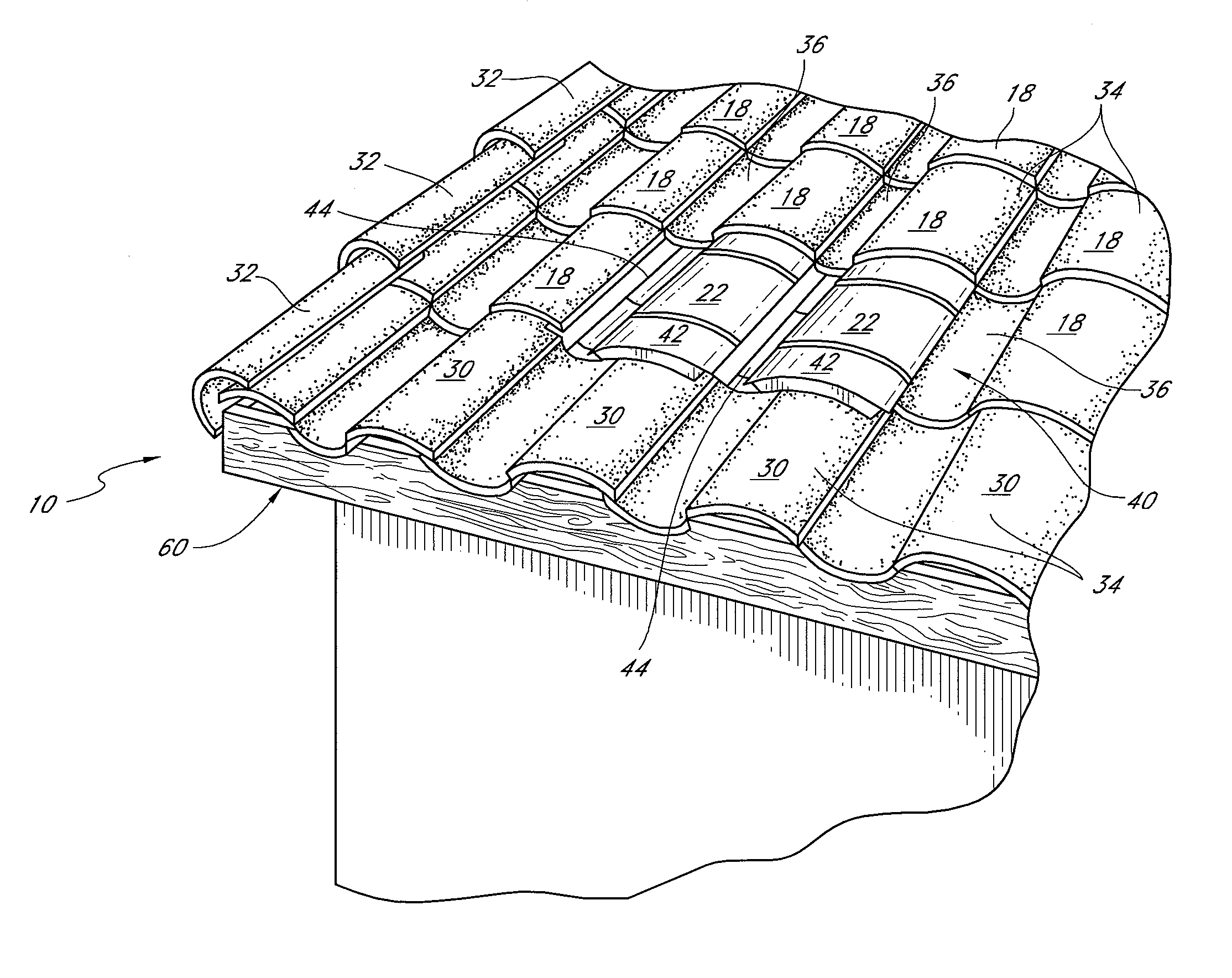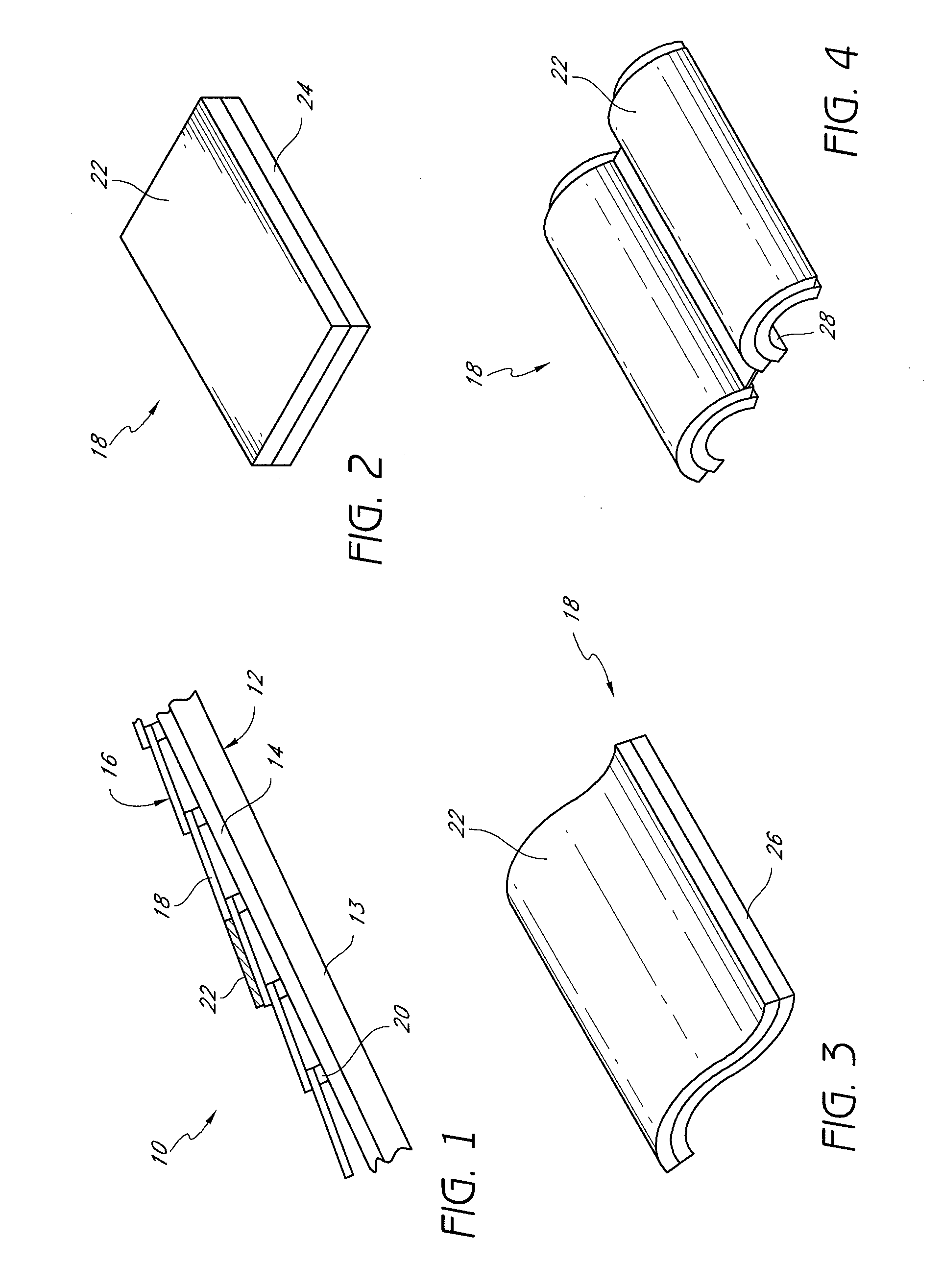Form-fitting solar panel for roofs and roof vents
a solar panel and roof technology, applied in the field of roofs for buildings, can solve the problems bulky solar panels, and not blending in with the roof covering, and achieve the effect of reducing the attractiveness of the roo
- Summary
- Abstract
- Description
- Claims
- Application Information
AI Technical Summary
Benefits of technology
Problems solved by technology
Method used
Image
Examples
Embodiment Construction
[0028]FIG. 1 shows an exemplary tile roof 10 comprising a roof frame 12, a roof deck 14 supported on the roof frame 12, and a layer 16 of roof cover elements. In this embodiment, the roof cover element layer 16 comprises a layer of tiles 18. However, the roof cover elements may alternatively comprise other elements, such as shingles (e.g., made of steel, metal, composition material, wood, or other materials). The tiles 18 may be formed of, e.g., metal, clay, concrete, plastic, or other materials. The roof frame 12 may comprise rafters 13 that extend from an upper ridge (not shown) of the roof to a lower eave (not shown). The roof frame 12 may also comprise purlins (not shown) that extend substantially parallel to the ridge and eave and substantially perpendicular to the rafters 13. The roof deck 14 typically comprises plywood, metal, or some type of alloy (e.g., steel) sheeting. The roof cover element layer 16 typically comprises a plurality of tiles 18 supported on battens 20 orien...
PUM
 Login to View More
Login to View More Abstract
Description
Claims
Application Information
 Login to View More
Login to View More - R&D
- Intellectual Property
- Life Sciences
- Materials
- Tech Scout
- Unparalleled Data Quality
- Higher Quality Content
- 60% Fewer Hallucinations
Browse by: Latest US Patents, China's latest patents, Technical Efficacy Thesaurus, Application Domain, Technology Topic, Popular Technical Reports.
© 2025 PatSnap. All rights reserved.Legal|Privacy policy|Modern Slavery Act Transparency Statement|Sitemap|About US| Contact US: help@patsnap.com



